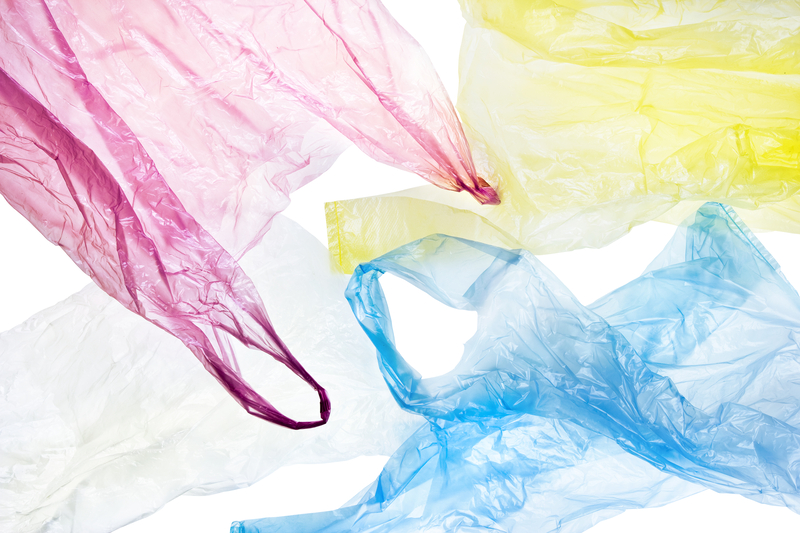Step-by-Step Guide to Disposing Your PPE Responsibly
In the wake of increased use of Personal Protective Equipment (PPE), it's more important than ever to dispose of PPE responsibly. From face masks and gloves to gowns and shields, this vital equipment has helped protect billions worldwide. However, improper PPE disposal is now creating a new set of challenges for our communities and planet.
In this comprehensive guide, we'll walk you through the best practices for PPE disposal, highlight key environmental considerations, and offer practical steps for individuals, businesses, and communities to manage PPE waste sustainably. Let's ensure that staying safe doesn't come at the expense of the environment!
Understanding PPE and Its Impact
What is PPE?
PPE (Personal Protective Equipment) refers to specialized clothing or equipment worn by individuals to protect themselves from health and safety hazards. Common types of PPE include:
- Face masks (disposable and reusable)
- Gloves (latex, nitrile, vinyl, etc.)
- Face shields and visors
- Protective gowns and aprons
- Shoe covers and hair caps
Environmental Concerns of Improper PPE Disposal
The mass use of single-use PPE has led to a significant environmental burden. Improperly discarded face masks, gloves, and other PPE items often end up in landfills, waterways, and public spaces.
- They take centuries to decompose.
- Wildlife can mistake them for food, leading to injury or death.
- They pose health risks to sanitation workers and the general public.

Step-by-Step PPE Disposal Guide
1. Recognize the Type of PPE
The disposal method for PPE depends on whether the item is contaminated, what it's made from, and if it can be recycled or reused.
- Single-use PPE (e.g., disposable masks, gloves): Meant for one-time use and cannot be sanitized for reuse.
- Reusable PPE (e.g., cloth masks, some gowns): Can be washed and reused several times before disposal.
2. Remove PPE Properly
Incorrect removal can pose health risks. Always follow the correct method to safely take off PPE:
- Wash or sanitize hands before touching your PPE.
- For gloves: Peel off from the wrist, turning them inside out, and dispose of without touching the outside.
- For masks: Remove by the ear loops or ties; avoid touching the front of the mask.
- Wash reusable PPE according to manufacturer's instructions.
- Sanitize hands again after removal and disposal.
3. Sort Your PPE Waste
The next step in effective PPE waste management is sorting. Separate PPE from regular recyclable material.
- Most single-use PPE cannot be recycled through normal municipal systems.
- Place used PPE in a designated, lined bag.
4. Package PPE Waste Securely
Packaging is essential to prevent contamination. Here are best practices:
- Seal used masks, gloves, and other PPE in a plastic bag.
- Double-bag as a precaution if PPE was used in settings with potential infection risks (e.g., caring for someone ill).
- Tie the bag securely to avoid leaks or spillage.
5. Label PPE Waste When Necessary
If you have a significant amount of PPE waste (e.g., from offices, clinics, or caregiving at home):
- Label bags as "PPE Waste" or "Contaminated Waste".
- Follow local guidelines for additional labeling or color codes.
6. Dispose of PPE Waste Responsibly
Check your municipality's guidelines for PPE disposal. In most regions:
- PPE waste should be placed with general waste, not with recyclables.
- Do not flush masks, gloves, or wipes down toilets--this can cause blockages and pollution.
- Use dedicated PPE bins if provided in public spaces or workplaces.
7. Wash Your Hands Thoroughly
After disposing of any PPE, it is critical to wash hands with soap and water or use an alcohol-based sanitizer. This final step helps to stop the spread of germs and viruses.
Special Guidelines for Businesses and Workplaces
Businesses, healthcare facilities, schools, and other organizations generate high volumes of PPE waste. Their responsibility for managing PPE responsibly is even greater.
Institutional PPE Waste Management Steps
- Set up designated PPE disposal stations equipped with lined, foot-operated bins.
- Provide clear signage on how to dispose of PPE properly.
- Establish regular waste collection routines to avoid overflow.
- Train staff on correct removal and disposal methods.
- Where possible, partner with certified hazardous waste disposal contractors for bulk PPE waste.
*These measures protect workers and the wider community from potential exposures.*
Encouraging Responsible PPE Practices Among Employees
- Conduct regular awareness sessions on why responsible PPE disposal matters.
- Encourage the use of reusable PPE when appropriate and safe.
- Provide easy access to handwashing and sanitizer stations.
Promoting a safety culture ensures better compliance with PPE disposal guidelines.
Can PPE Be Recycled?
The Challenge of Recycling PPE
Most single-use PPE, made from plastic or synthetic fibers, is not recyclable via traditional household programs. They are designed for durability and protection, but this also means they persist as waste.
Emerging Solutions for PPE Recycling
Some specialized programs and innovations are emerging to address PPE waste, such as:
- Take-back schemes provided by PPE manufacturers.
- Terracycle and similar services that specialize in PPE recovery and recycling.
- Pilot projects turning used masks and gloves into construction material or fuel.
Frequently Asked Questions on PPE Disposal
What should I do with a cloth mask?
Reusable cloth masks should be washed after each use with hot water and detergent. When the mask is worn out or damaged, it can be discarded with household waste. Check if local recycling fabrics bins accept textile PPE.
Can I compost PPE?
Most PPE, including disposable masks and gloves, are not compostable due to their plastic content. Only items specifically labeled as biodegradable or compostable should be placed in compost bins.
Is it safe to donate unused PPE?
Yes--if you have sealed, unused PPE, consider donating to local hospitals, shelters, or community organizations. Confirm the items meet their current requirements.
How do I protect waste collectors?
Always double-bag and securely tie used PPE waste, especially if potentially contaminated. Label bags when appropriate and avoid overfilling bins.
What should I do if no PPE disposal guidelines exist in my area?
Default to these steps:
- Bag and seal PPE waste separately.
- Dispose of with household trash, not recycling.
- Wash hands thoroughly after handling.
- Litter is never acceptable.
Innovative Alternatives and Reducing PPE Waste
Reduce, Reuse, and Rethink PPE
The most sustainable solution is minimizing PPE waste generation from the outset. Here's how:
- Opt for reusable masks and gowns where CDC/WHO guidelines allow.
- Select PPE made from sustainable, biodegradable, or recyclable materials when available.
- Train individuals in hygienic PPE reuse and sanitization.
- Support research and policies encouraging greener PPE production.
Beware of "Wish-Cycling"
Wish-cycling--placing non-recyclable items in the recycling bin in hopes they'll be recycled--is counterproductive. PPE items contaminate recycling streams, posing risks to workers and undermining recycling efforts.
- Do not place used masks, gloves, or wipes in recycling bins unless specifically instructed by your waste provider.
The Global Perspective: Why Responsible PPE Disposal Matters
Millions of tons of additional PPE waste have been generated since the onset of the COVID-19 pandemic.
- Improper disposal leads to litter, marine pollution, and microplastics entering ecosystems.
- Health risks increase for waste collectors and sanitation workers globally.
- Proper PPE waste management builds trust and safety within communities.

Summary: Responsible PPE Disposal in Everyday Life
- Recognize your PPE type and usage guidelines.
- Remove, sort, and package PPE securely.
- Never litter PPE--always use designated or household bins, not recycling bins.
- Support and learn about PPE recycling programs where available.
- Wash your hands after handling any PPE waste.
- Advocate responsible disposal habits in your community and workplace.
Conclusion: Make Every PPE Choice Count
By following this step-by-step guide to disposing your PPE responsibly, you contribute to a cleaner, healthier world. Proper PPE waste management protects public health, workers, and the environment. Whether at home, at work, or in public, make it a habit to choose, use, and dispose of PPE conscientiously.
For further information, consult your local or national waste authority, the World Health Organization, or environmental agencies for the latest PPE disposal guidelines. Share this knowledge and become part of the solution--safe, sustainable, and responsible!